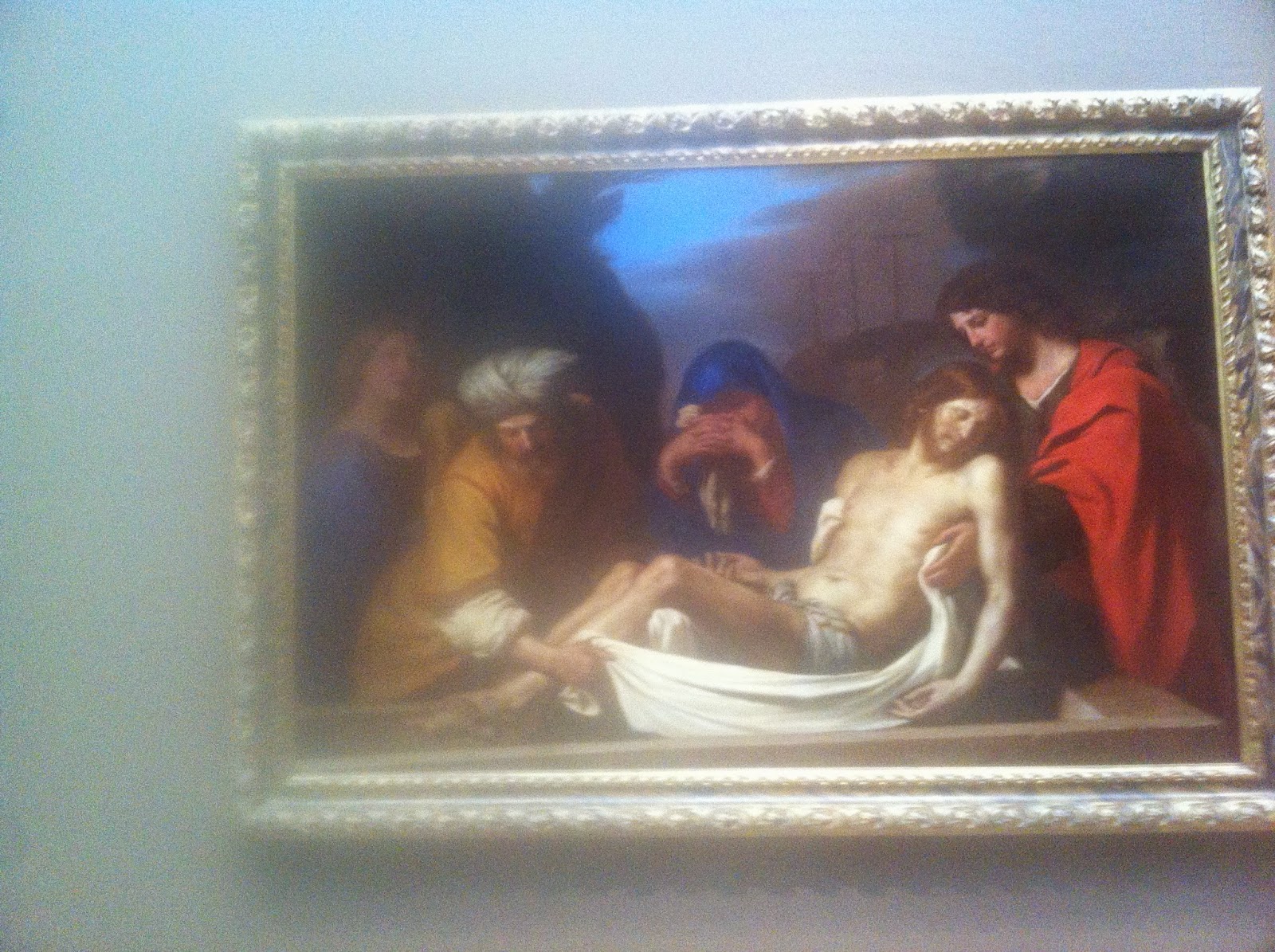At this point, looking back at my camera roll, I realized even at this point, I was really only mostly through roughly three quarters of the entire content material that I snapped of the entire museum. Indeed, I missed an entire exhibit and a floor and the sheer number of photos that I took was still absolutely astounding. In fact, I must stress that all of these photos also only represent a good chunk of the artworks displayed in the Art Institute of Chicago; there is a lot more variety in terms of artwork displayed in each gallery or exhibit. I only curated some of the more interesting pieces to analysis and blog about.
After looking at the previous rather diverse gallery, this next exhibit was measurably more subdued and conformed to archetypical conceptualization. In other words, this painting doesn't evoke the sense of perplexity that the previous gallery did when I first glanced at them. Though, admittedly this painting here does a great job of fooling you until you realize what's so unique about it. On normal inspection, it is easy to mistaken this painting as a dashing young man riding a horse. But look closer and you notice three very distinctive features of this painting. For one thing, The rider is not a grown man - it's a young prepubescent boy riding on the "horse". Which also raise the point that the horse isn't really a horse per se, but a severely undersized donkey or mule. Or, it could be like the ancient equestrian statues - not represent the proportions accurately at all. And finally, the background aren't nearly as emphasized as some of the landscape paintings previously are - the landscape is rather blurred out and shows only subtle details to give a sense of what the environment looks like. I'm glad to have taken a picture of this particular painting - it tricked my eyes into believing the device had a standard composition and subject matter.
As far as paintings of Roman times go, this one is amongst the most elaborate ones that I've seen and also the most confounding one that I've seen. When I first inspected this painting, I'd immediately assumed it was a painting depicting Roman ruins, largely because Roman buildings aren't exactly know for creating vast systems of colonnades and arches without a roof to cover it. The most famous approximation of this trend is Saint Peter's Basilica, with it's clamping series of colonnades and statues in the actual Square. However, that is Christian and post-Roman architecture. That wasn't the only clue that lent clue to what this painting depicted. The presence of Romanesque subjects also gave increasing evidence to my observation. So, this amazing painting of a Romanesque ruin area certainly demonstrated a very divergent depiction of Ancient Rome - with such open expanses bounded by series of arches. These aren't aqueducts either, because of the shape and lack of slopes to direct water. For that reason alone, this painting again proves to one of a series of truly surprising artworks in the Art Institute of Chicago.
Continuing the theme of works of art that defy expectations, this demonstrates a profound departure from normal artistic portrayals. While I am not clear what is going on here, the deformed shape of the woman is certainly counter to the European general affinity for good aesthetics and pleasant form. Again, the beige composition is rather unique in the large scheme of European art - much like the black and white painting earlier. Unlike the previous Romanesque artwork, this portrait depicts a strong focus towards the central subject. Not only is the woman facially deformed, she is also entirely out of proportion in this painting to illustrate perhaps the intensity of her bodily expression. I left this artwork with a weird feeling because it invades my understand of European art - such elongated figures did not become popular or well known until works like Francesco Goya's Saturn Devouring His Son in 1819.
As unsettling this particular artwork was, I didn't remember it was nearly this...unique. I"m not sure if this is a camera issue, but apparently this artwork in similar art style appears to be hanging off the edge of a wall and is transparent to allow the wall to show through. It may have been a photograph of a mirror, but I doubt I would take a photograph like that. Indeed, I'm more intrigued by the mystery and oddity of this particular work of art that I'm more perplexed as to how I even took this photo or how it was possible for somebody in early Europe to perform this kind of effect. However, speaking of the actual subject matter, I must argue that this painting is less dark and mysterious than the previous one, clearly showing a man and woman is some state of disagreement. Of course, the facial features are not very distinct and they demonstrate a poorly formed outline of the faces. Those faces are distorted and the proportions are still completely unrealistic. For example, the man's back should not bend at that angle and from that point on the body - it is completely antithetical to normal degrees of human retrograde movement. Other than the relatively mundane subject matter, I'm still perplexed by how I took this photography, as I can't image a curator hanging an artwork like that on the edge.
The theme of this gallery was "I stumbled in what appears to be a normal looking exhibit only to discover it actually doesn't conform to expectations." Considering the dull affairs of the earlier European paintings in this museum, these paintings are certainly a delightful continuation of artistic wonders that gives people pause to ponder the merits of such art styles.











